
Yulia Olennikova
~10 min
Guide To High-Performing ABM Display Advertising
ABM display advertising is a big part of ABM, and it's one of the most effective ways to reach your target accounts.
ABM display ads are beneficial in many ways. You need to implement account-based strategies into your advertising mix if you want to:
- Create awareness
- Drive intent and conversions
- Support the sales team in long B2B sales cycles
- Increase retention and/or drive upsells
The best thing about ABM display ads is that they allow you to accurately target only the people from the companies you want to target, making sure your ad spend is not wasted. ABM display ads also allow you to target the entire buying committee, and not just job titles, like LinkedIn.
Unlike one social platform, ABM display advertising platforms allow you to reach target buyers across thousands of websites across the web. Plus ABM display ads can be easily integrated with other channels for further remarketing, like search ads or LinkedIn Ads.
All of this makes ABM display ads essential for every B2B company that wants to grow and scale.
But ABM display advertising is more than just setting it up and hoping for the best. ABM display ads require careful planning and strategy to get the best results.
So how do you do ABM display advertising right?
Here's a complete guide to help you get started!
Step 0. Define Your ICP
Before you start ABM display advertising, you need to first define your ideal customer profile (ICP). This is the foundation of any successful marketing strategy, ABM strategy included.
By defining your ICP, you opt-in for ABM display advertising that reaches the right people with the right message at the right time.
Important to mention: ICP is not a Buyer Persona.
An Ideal Customer Profile is used to define the characteristics of the account that you expect to generate the most value for your business. It includes the size of the company, industry, geographic location, revenue, employee count, and so on.
On the other hand, the Buyer Persona is used to define the characteristics of the exact people within the account. It includes job titles, behavior and interests, challenges and goals, fear, and motivation.
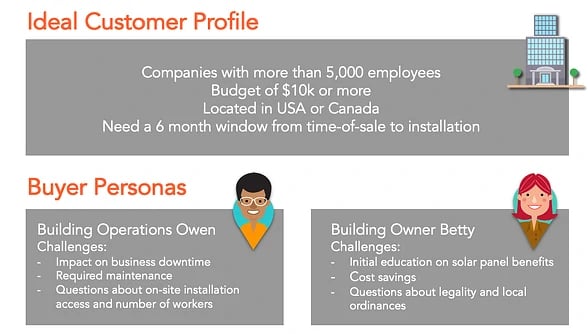
Source: HubSpot
Both ICP and Buyer Persona are important when doing account-based advertising, however, in this case, ICP should come first.
When it comes to defining the ICP, you can start by looking at your current customer base.
- What do they have in common?
- What industry are they in?
- How big are their clients?
- How much revenue do they generate?
Look for any common characteristics and attributes that point to your "perfect" customer.
.webp?width=1469&height=662&name=icp-1%20(1).webp)
If you don’t feel like doing this manually, N.Rich’s data-driven High-Velocity ICP will automate this process for you.
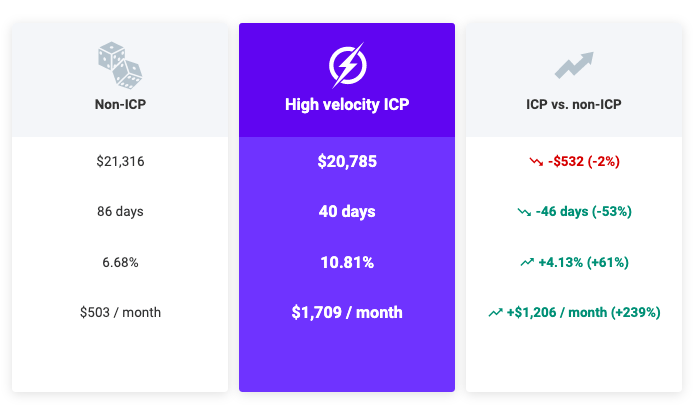
By taking your time to create an ICP, you will be able to focus ABM display ads on the specific accounts and people that are most likely to convert, leading to better ABM display ad performance and, of course, more ROI.
Step 1. Build TAL (Target Account List)
Now that you know who your ABM target customers are, it's time to build a target account list (TAL).
A target account list is a curated list of B2B companies that are the best match for your product or service and that are the most likely to convert into customers.
It's also a list of all the accounts that you'll be targeting with your ABM display ads.
To create a TAL, you should start by defining your Total Addressable Market (TAM).
TAM is the revenue opportunity within the market if 100% market share is achieved. This gives you an idea of your company's potential for growth, allows for financial forecasts and projections, and determines the effort and resources needed to reach goals.
Once you have TAM, you can start scoring accounts around sales velocity. This means identifying the factors that indicate which companies move through the pipeline faster and generate more revenue:
- Deal size
- Time to close
- Win rate
In combination with:
- The account's budget
- Previous interactions with the account (1st-party intent data)
- Account’s interest towards your niche (3rd-party intent data)
After that, you’ll assign each account a score based on those factors.
N.Rich helps build target account lists and score accounts quickly and easily, based on their sales velocity and buyer intent:
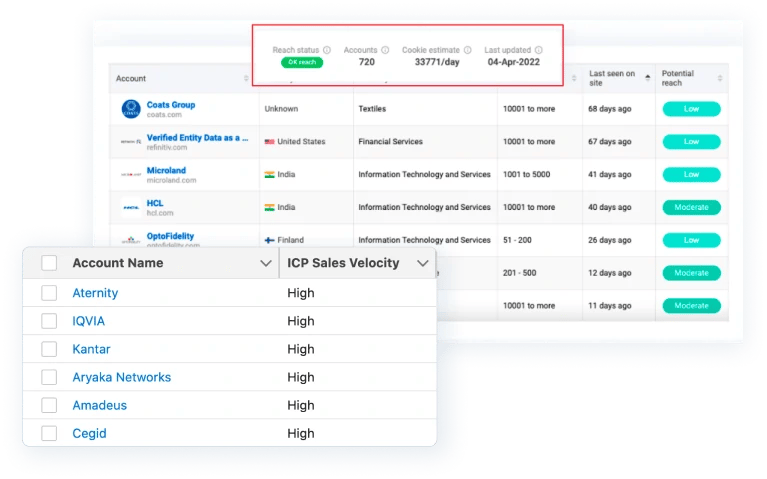
Step 2. Define Segments And Messaging
Knowing whom you are targeting and what they need is a necessary first step. After that, to maximize ABM display ad performance, you need to define segments and tailor your ABM messaging accordingly.
By segmenting your ABM target accounts by the funnel stage, you can build ABM display ads with the specific needs of each segment in mind, ultimately making ABM display ads more relevant and attractive for the people you’re targeting.
A typical B2B buyer journey consists of 4 major stages:
- Awareness
- Consideration
- Decision
- Loyalty
Here’s how the content can look for every stage.
Awareness stage ads
ABM display ads in the awareness stage should be focused on educating potential customers and introducing your product/service. This can be done through blog posts, videos, and other forms of content.
.webp?width=542&height=509&name=pasted%20image%200%20(1).webp)
Source: advance.ai
Consideration stage ads
ABM display ads in the consideration stage should focus on showcasing your product's features and benefits, while ABM display ads in the decision stage should focus on further emphasizing the benefits of your product/service and helping customers make an informed decision through reviews, case studies, and more.
.webp?width=900&height=455&name=pasted%20image%200%20(2).webp)
Source: Brian Downard
Decision stage ads
In the decision stage, you can showcase competitor comparisons, limited special offers, or case studies that are relevant to the potential client’s vertical.
.webp?width=593&height=163&name=pasted%20image%200%20(3).webp)
Source: AWS
Loyalty stage ads
ABM display ads in the loyalty stage should be focused on retaining customers and encouraging them to use your software for more use cases.
.webp?width=308&height=259&name=pasted%20image%200%20(4).webp)
Source: Semrush
By tailoring ABM display ads according to each funnel stage, you can reach ABM target accounts at the right time, with the right message, and increase your advertising performance.
|
Stage |
Target action and metric |
Content and message |
|
Awareness |
Website visits Ad engagement (e.g. video views) |
Non-product-related content to generate initial awareness “Annual report: state of X 2022 is released” |
|
Consideration |
Sign-ups Demo requests |
Product-related content describing features and benefits “Shorten your sales cycle with X - sign up for a free 30-day trial” |
|
Decision |
Purchases |
Vertical-specific, hands-on content like case studies “How Company X shortened sales cycles and tripled revenue with our product“ |
|
Loyalty |
Retention / Upsell |
Relevant product updates “Meet this new Feature” |
Step 3. Create Ads
Now that you have ABM target accounts and ABM messaging tailored to each funnel stage, it’s time to create ABM display ads.
When it comes to ABM display ads, there are several ad formats you can choose from. Let’s look at 3 most popular formats (all of them are available in the N.Rich ABM advertising tool):
- Banner Ads
- Video Ads
- Content syndication
Banner Ads are the most popular ABM ad format and can be used to drive brand awareness, engage potential customers, generate leads, promote content, etc.
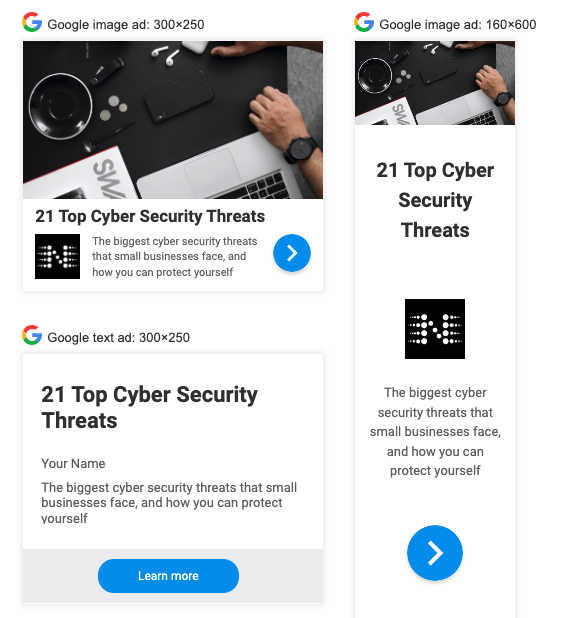
Video Ads are a great ABM ad format to use if you want to showcase your product engagingly and entertainingly.
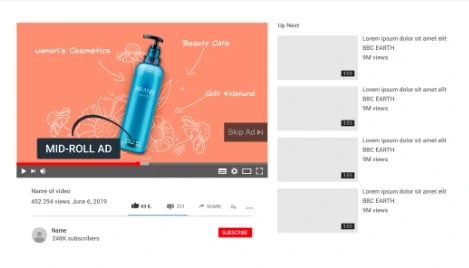
Content syndication ABM ads (available only for N.Rich's ABM Advertising users) are great if you have long-form content you want to promote (like a blog post or interview)
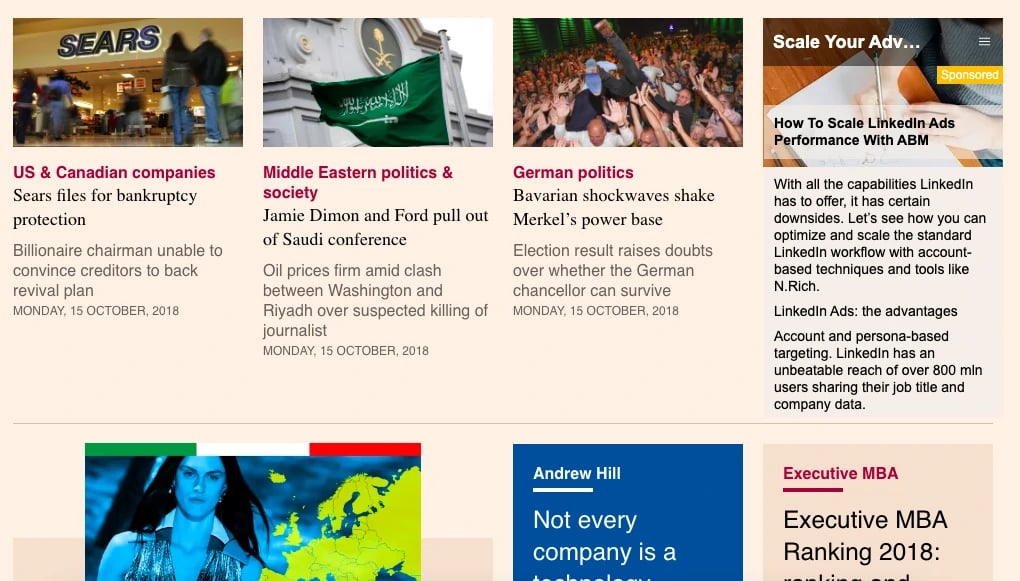
We recommend you use all available formats to reach more buying committee members with diverse types of ads.
An important thing to remember when creating ABM display ads is personalization. The ABM approach is all about personalization, so ABM display ads should reflect this.
You can personalize your ads in the following ways:
- Vertical-specific content. For example, if you’re targeting healthcare providers, share a case study from a healthcare company that appeals to specific industry problems:

Source: Cardinal agency
- Ad personalization tools. Platforms like Rollworks allow personalizing display banners with the company name and logo.
.webp?width=500&height=513&name=pasted%20image%200%20(5).webp)
Source: Rollworks
- Personalization based on job titles. On LinkedIn, you can build audience segments based on job titles and address the pain points that are specific to each department and role.
.webp?width=400&height=555&name=pasted%20image%200%20(6).webp)
Source: Gong
- Combination of attributes. Although launched on Facebook, this classic case study by Larry Kim combining an audience of Star Trek fans and liberals proves that you need to think outside the box and go beyond standard attributes if you want to stand out.
.webp?width=400&height=560&name=pasted%20image%200%20(7).webp)
Source: Wordstream
Step 4. Launch And Measure Results
Once ABM display ads have been created, it’s time to launch ABM campaigns and track ABM ad performance.
ABM display ads should be launched step by step, starting with a small ABM campaign and gradually increasing ABM campaign reach and budget. This will help you test ABM ads and optimize ABM campaigns for maximum ABM ad performance.
It’s important to keep in mind that it will take time to see the impact on your pipeline, but in the meantime, you can monitor leading indicators and act upon them:
- Engagement from your target accounts should start - coming from day one
- Uplift in website traffic - within a week
- Pipeline impact (conversion to form fills, response rate, time to conversion) - within 2 to 3 months
Monitoring these leading indicators will help you understand if your ABM display ads are working and if adjustments need to be made.
.webp?width=468&height=494&name=track%20roi%20(1).webp)
Leads vs Engagement: the right way to measure the ABM impact
One metric many companies put too much emphasis on is Leads. However, Leads are not a metric to focus on when it comes to ABM campaigns.
Why?
Well, think about this: When was the last time you bought a product or signed up for a demo because you saw a banner?
Most probably, it took you some time to decide on signing up or purchasing - from seeing a banner on a website to stumbling upon the company page on LinkedIn to hearing about it from a colleague to googling a competitor and seeing their ad “here’s a better alternative”.
Someone could see your ABM ad, but not sign up right away and instead take a few weeks or months to finally sign up - this doesn’t mean the ABM campaign has failed.
So, make sure you pay attention to leading indicators and measure ABM ad performance accordingly.
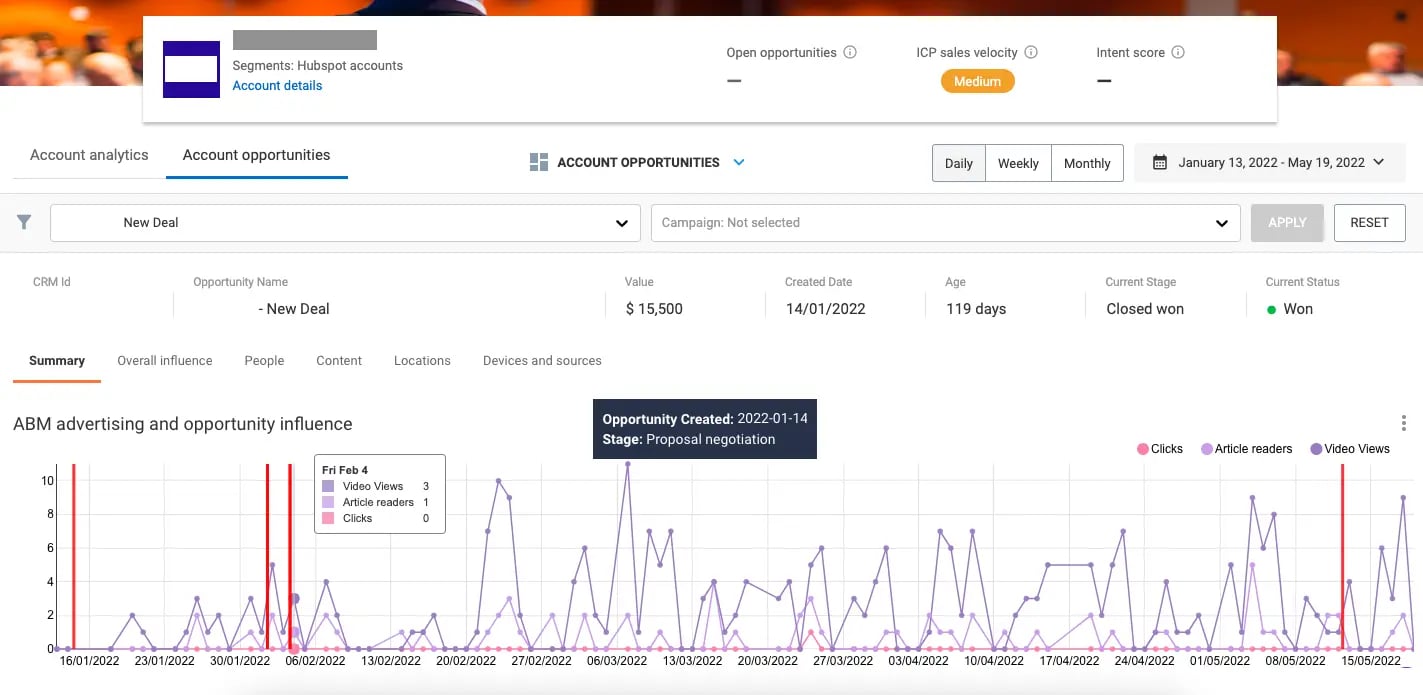
Step 5. Improve And Repeat
Once ABM campaigns have been tested and tracked, it’s time to analyze the data and make necessary adjustments to improve ABM ad performance.
Look at the data and ask yourself:
- What worked best?
- What could be improved?
- How can we make our ABM display ads more engaging and effective?
- What campaigns and creatives drove a lot of traffic, but few qualified leads?
- Which target accounts were the most responsive and which were the least responsive?
Analyzing the data will help you identify potential actions and ideas for improving ABM ad performance. You can then use these insights to make adjustments and optimize your ABM campaigns.
Once adjustments have been made, it’s time to repeat the process. Launch more ABM campaigns, track and measure performance, analyze the data and make adjustments.
By following this cycle of launch-track-analyze/improve-repeat, you can ensure that your ABM display ads are optimized and performing at their best.
In summary, high-performing ABM display advertising requires thoughtful strategy and analysis.
Define your ICP, build a target list, define segments and messaging, create engaging ads, launch and measure performance, and then repeat this cycle.
Good luck!
Yulia Olennikova
Marketing Manager at N.Rich